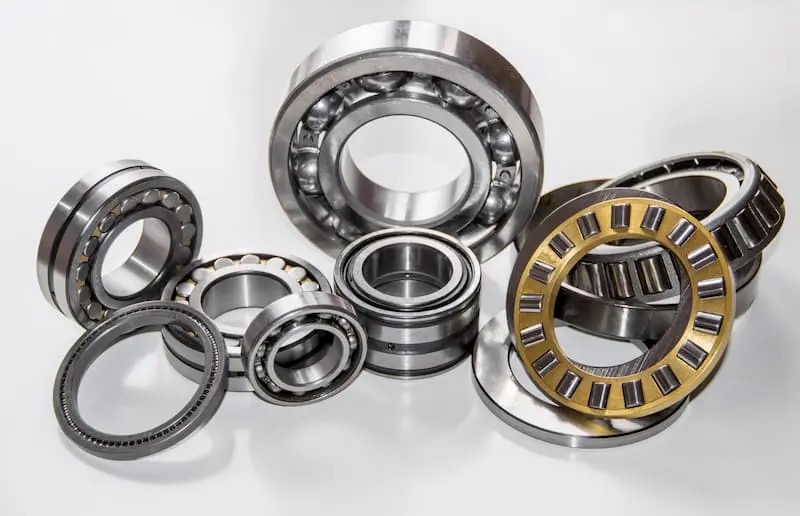
— November 24, 2025

Forklifts are essential machines in various industries, enabling efficient lifting and transporting of heavy loads. Whether you’re considering becoming a forklift operator or simply curious about these powerful machines, you may have questions about what they are and how they work.
Here are some of the most commonly asked questions about forklifts.
A forklift is a type of heavy equipment used for lifting, moving and transporting heavy loads in warehouses, construction sites and other settings. The front of a forklift is typically fitted with pallet forks that can be used to transport loads on pallets.
There is no universal forklift certification program, but all forklift operators must undergo training that meets OSHA requirements. According to OSHA, operators must receive classroom instruction, behind-the-wheel instruction and pass an exam demonstrating their ability to safely operate a forklift.
While the amount of time it takes to get certified may vary based on your program or employer, it typically takes just a couple of days to become certified to operate a forklift.
Forklift certification typically costs between $300 and $600. However, many employers offer on-the-job forklift training for employees at no cost.
Forklift certification may last up to three years, but this may vary according to your employer’s own requirements. Employers are required by law to evaluate their forklift operators every three years and provide additional training if needed.
Forklifts may weigh anywhere from 5,000 to 20,000 pounds. Medium-sized forklifts, like those used in warehouses, weigh approximately 10,000 pounds.
The average base salary for forklift operators in the United States is around $18 per hour. However, operator salaries vary from state to state and according to an operator’s experience.
A standard forklift, like the kind used in warehouses, costs around $20,000. However, a forklift can cost up to $45,000 depending on its features.
Forklifts are quite heavy, and can weigh up to 20,000 pounds. On average, however, a standard forklift weighs about 10,000 pounds.
Most forklifts, like the kind used in warehouses, are between 7 and 7.5 feet tall.
Most forklifts, like the kind used in warehouses, are between 41 and 45 inches wide.
While most forklifts top out at around 10 miles per hour, many companies choose to limit how fast their forklifts can go. In settings like warehouses and stores, it’s common for forklift speeds to be limited to five MPH.
A standard forklift can typically lift loads weighing between 3,000 and 12,000 pounds. You can find the lift capacity of your forklift on its data plate, which should be mounted to the instrument panel near the operating controls.
Your forklift’s lift capacity should be given on its data plate. The data plate is a placard containing information about the forklift and is typically secured to the machine’s instrument panel near the operating controls.
The forklift stability triangle refers to the geometric arrangement between the two front wheels and the pivot point of the rear axle. It represents the area within which the forklift maintains stability during operation.
The center of gravity on a forklift is the point where the weight of the forklift is evenly distributed. It typically lies around the middle of the forklift, and shifts forward over the front axle while carrying loads.
To prevent forklift tip-overs, operators should ensure proper load distribution, avoid excessive speeds and sharp turns, never overload the forklift and maintain stability by staying within the forklift's rated capacity.
The mast is the vertical assembly on the front of a forklift that supports and raises or lowers the load. It consists of an inner and outer upright, lifting chains or cylinders and a set of rollers or rails.
Forklifts have a 3-point suspension system, which distributes the machine’s weight between the two front tires and the pivot point, which is in the middle of the forklift’s rear wheels.
Operators should perform daily pre-shift inspections of their forklifts to check for any visible damages, mechanical issues or safety concerns before using the equipment.
Water should be added to a forklift battery after fully charging it and when the electrolyte levels in the battery cells fall below the recommended level. It is important to follow the manufacturer's guidelines.
Loads on a forklift should be carried as low as possible while still maintaining clear visibility. Ideally, the load should be carried at a height that allows the operator to see over the top of it without obstructing their vision.
Before exiting a forklift, park it on a level surface, engage the parking brake, lower the forks to the ground, turn off the engine and remove the key. Also, make sure the area is clear of obstructions.
Forklifts are usually transported by driving them onto a flatbed trailer or using a specialized forklift transport vehicle. Securing the forklift with proper restraints and following applicable safety regulations is crucial.
Plugging, also known as regenerative braking, is a technique used to slow down or stop an electric forklift by reversing the direction of the electric motor's rotation, which turns it into a generator and helps in deceleration.
The load should be carried as low as possible to maintain stability and visibility. It is recommended to keep the load at a height that does not obstruct the operator's forward or upward visibility.
Generally, only one person, the trained operator, is allowed to ride on a forklift. Forklifts are designed to carry a single occupant for safety reasons, and passengers are not permitted.
An order picker is a type of forklift that features a platform or cage for the operator to stand on while lifting them to reach items at various heights in a warehouse or storage facility, typically used for order fulfillment.
A lull forklift, also known as a telehandler, is a type of forklift with a telescopic boom that extends both horizontally and vertically. Unlike conventional forklifts, lulls can reach greater heights and have increased maneuverability for various construction and material handling tasks.

Hydraulic maintenance for heavy construction equipment
November 24, 2025

How to choose the best grease for heavy equipment
November 21, 2025

Single drum roller vs double drum roller: how to choose the right compaction roller
November 21, 2025

What is a slew bearing and how does it work?
November 20, 2025